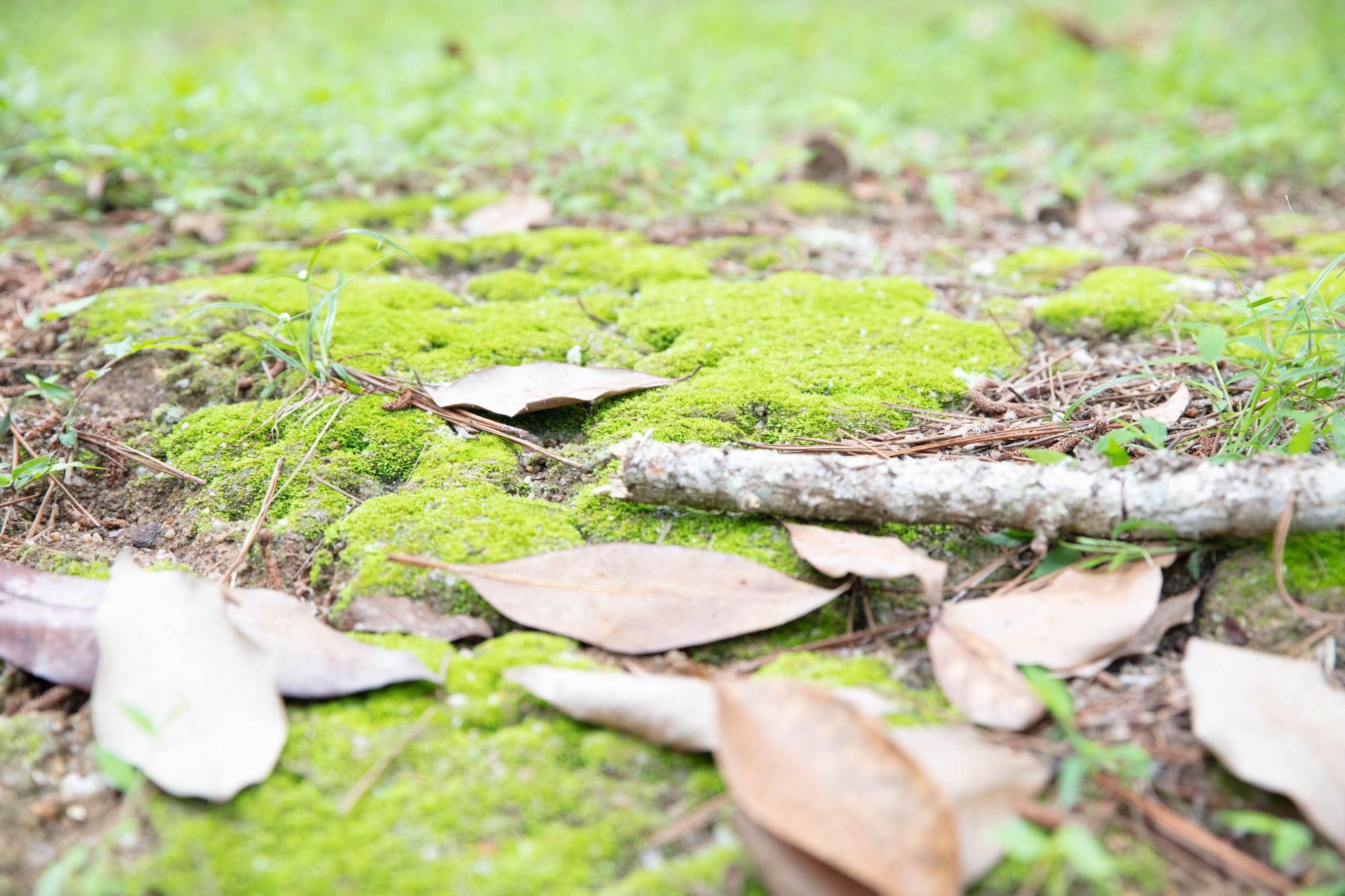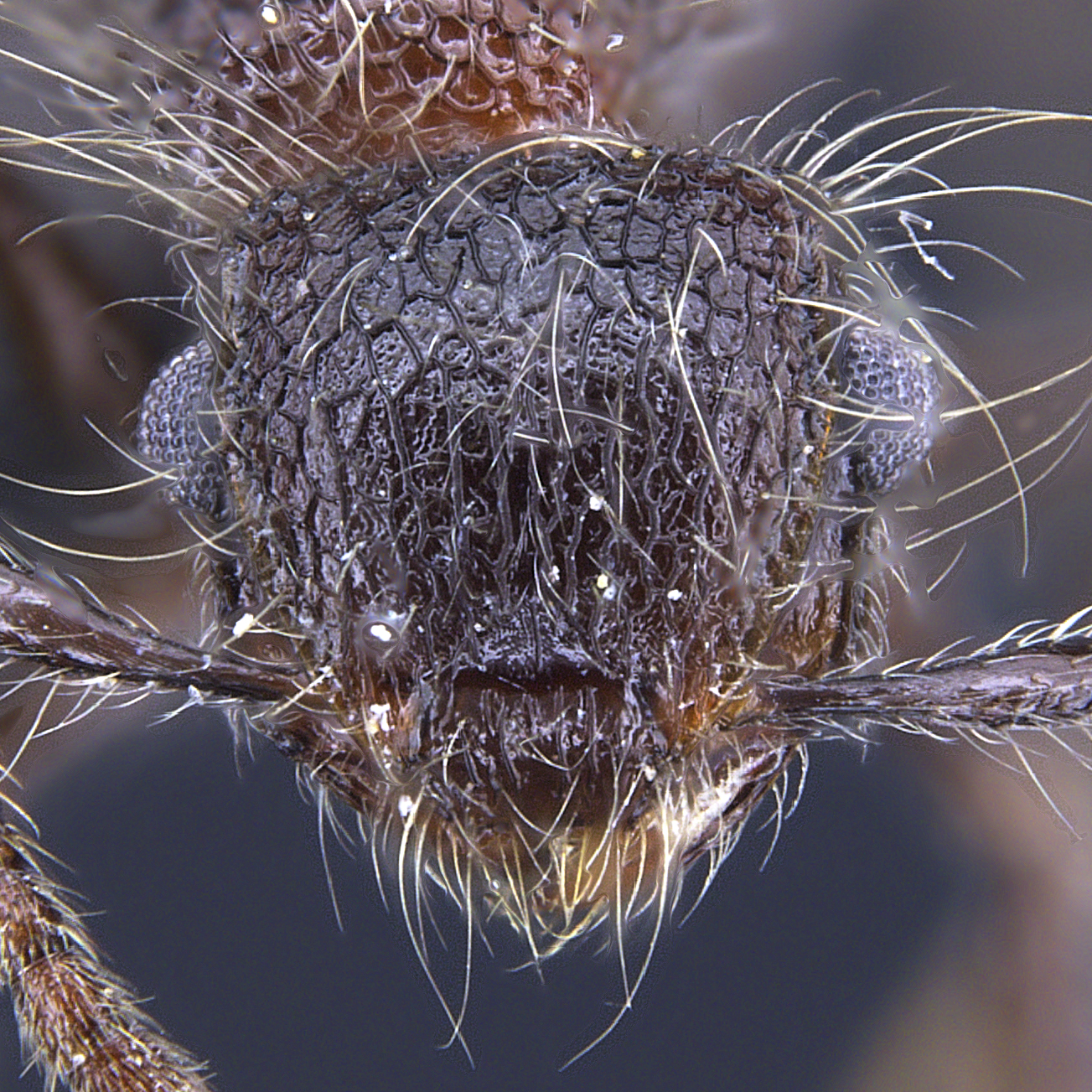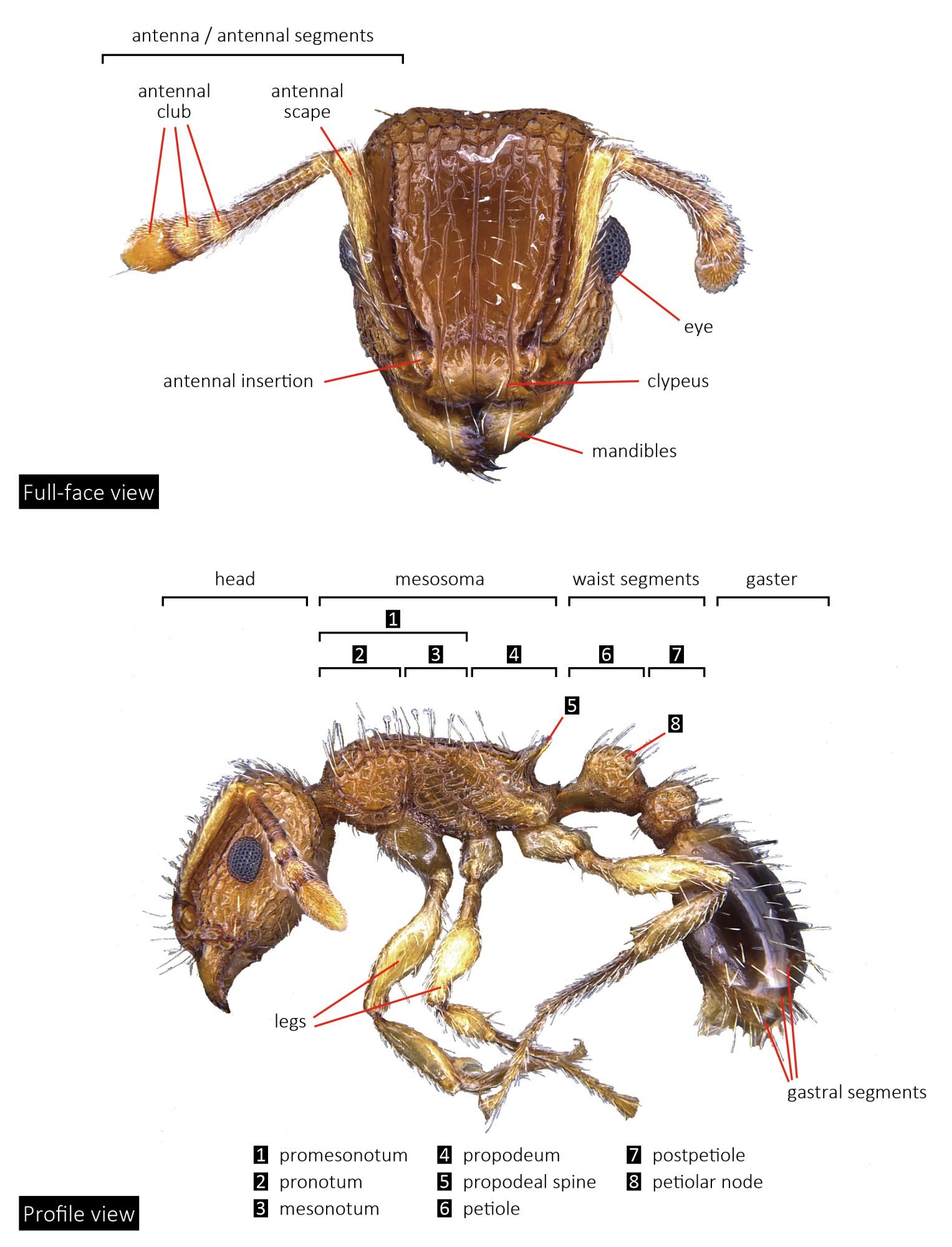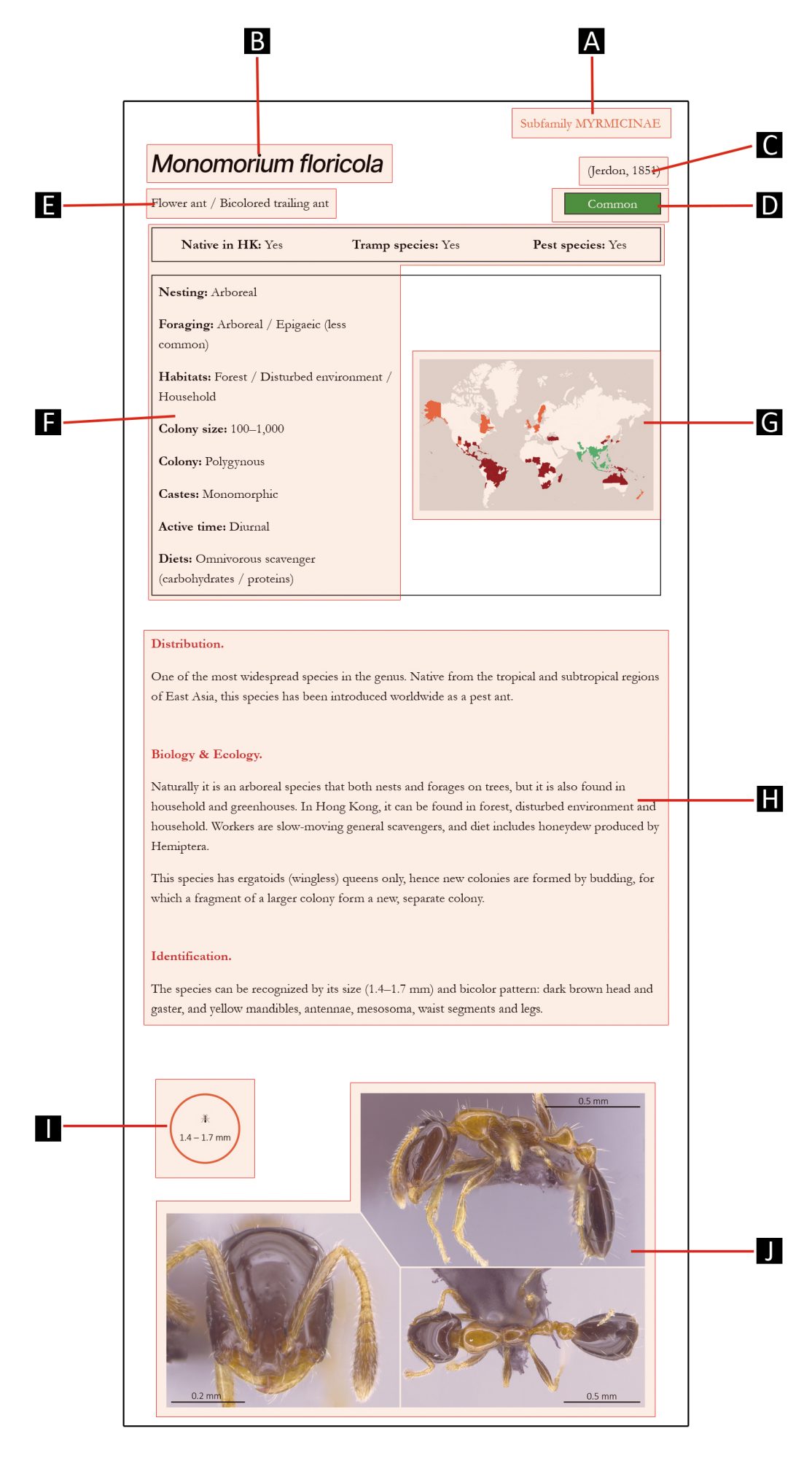
Subfamily MYRMICINAE
GENUS
Meranoplus
Smith, 1853
Shield ants
Distribution.
A moderate-sized ant genus with 88 species described. The genus has a widespread distribution in the tropical and subtropical regions of the Old World, with the diversity being highest in Australia.
Biology & Ecology.
Meranoplus species are usually found above the ground, with nests usually located within the soil or decaying wood. Nests are small and contain around a hundred workers, forming monogynous colonies (one queen per colony).
Some species are general scavengers and feed on plant seeds opportunistically, while some others are specialist granivores (seed-eaters). Workers’ foraging is usually on the ground or in leaf litter, occasionally on plants.
Workers are known for being slow-moving and having thanatotic behavior (playing dead) when disturbed.
Identification.
Meranoplus species are medium in size (4–6 mm), mostly with brown to black coloration, but there are also species that have lighter coloration. They can be recognized by a compact mesosoma, their 9-segmented antennae with 3-segmented club, and head and body covered with erect hairs.

Species in this genus




